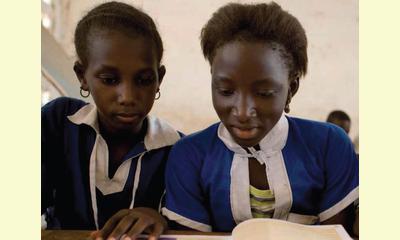|
|
Gambia: Teachers Trained On Peace Building
an article by Alieu Ceesay, The Daily Observer (Banjul)
Teachers drawn from Region One Educational Directorate Wednesday began a two-day training on peace building, organised at the conference hall of the National Nutrition Agency by the West African Network on Peace building (WANEP), The Gambia.

click on photo to enlarge
Centered on the theme, "Catching them young,"the training is aimed, among other things, to help teachers in identifying and mapping strategies against conflicts in school, especially by instilling the spirit of peace in the minds of the young ones.
Speaking at the opening ceremony, the national coordinator of WANEP, The Gambia, Pamela Cole, reiterated that the training is meant to strengthen the capacity of the teachers in peace building and conflict prevention through their peace education programme.
"Since we are more than fortunate to live in a country like The Gambia that has never experienced armed conflict since independence," Cole noted, "there is great need to promote a culture of peace." She said WANEP's peace education programme targets schools, pointing out that teachers' role in the society is crucial since they are entrusted with the enormous responsibility of shaping the young and fragile minds of students.
"With so many violence raging around the world, it is important to remember that our global existence depends on learning to live together without the threat of violence and armed conflict. As educators, we have unique opportunity to promote peaceful co-existence, by bringing the process of peace making and peace keeping to the attention of students in the classroom," Madam Cole remarked.
Through the classroom, she explained, WANEP plans to enrich and improve its peace education programme in schools as a tool for prevention.
For the secretary general of the Gambia Teachers Union, Antoinette Corr-Jack, peace is not limited to the absence of armed conflict but that it also has a positive dimension aimed at achieving the basic need of all human beings, eliminating all forms of violence, and respecting human rights for all.
She stressed that peace must begin in the minds and hearts of children; that the challenge is to make sure children receive quality education that will help them build peace. "Peace education aims to find the root cause of each problem, and helps us to think creatively about solutions, and most importantly to act on them," she stated.
Indicating the precious nature of peace, the GTU secretary general stressed the need for it to be nurtured, maintained and defended.
|








|
DISCUSSION
Question(s) related to this article:
Peace Studies in School Curricula, What would it take to make it happen around the world?
* * * * *
Latest reader comment:
During the Asian Educators Symposium, we found out that Peace Education is still not part of the school curriculum in most countries. However, the participating teachers have been incorporating peace education in their teaching subjects, such as English, social studies, and character education. We all agreed that love and the will to nurture peace in children are the most important basis for peace education. Even if peace education is not a part of the curriculum, peace can be taught through any subject. Whatever you are teaching, if it comes from the heart, then it will touch the minds of children.

|
|









